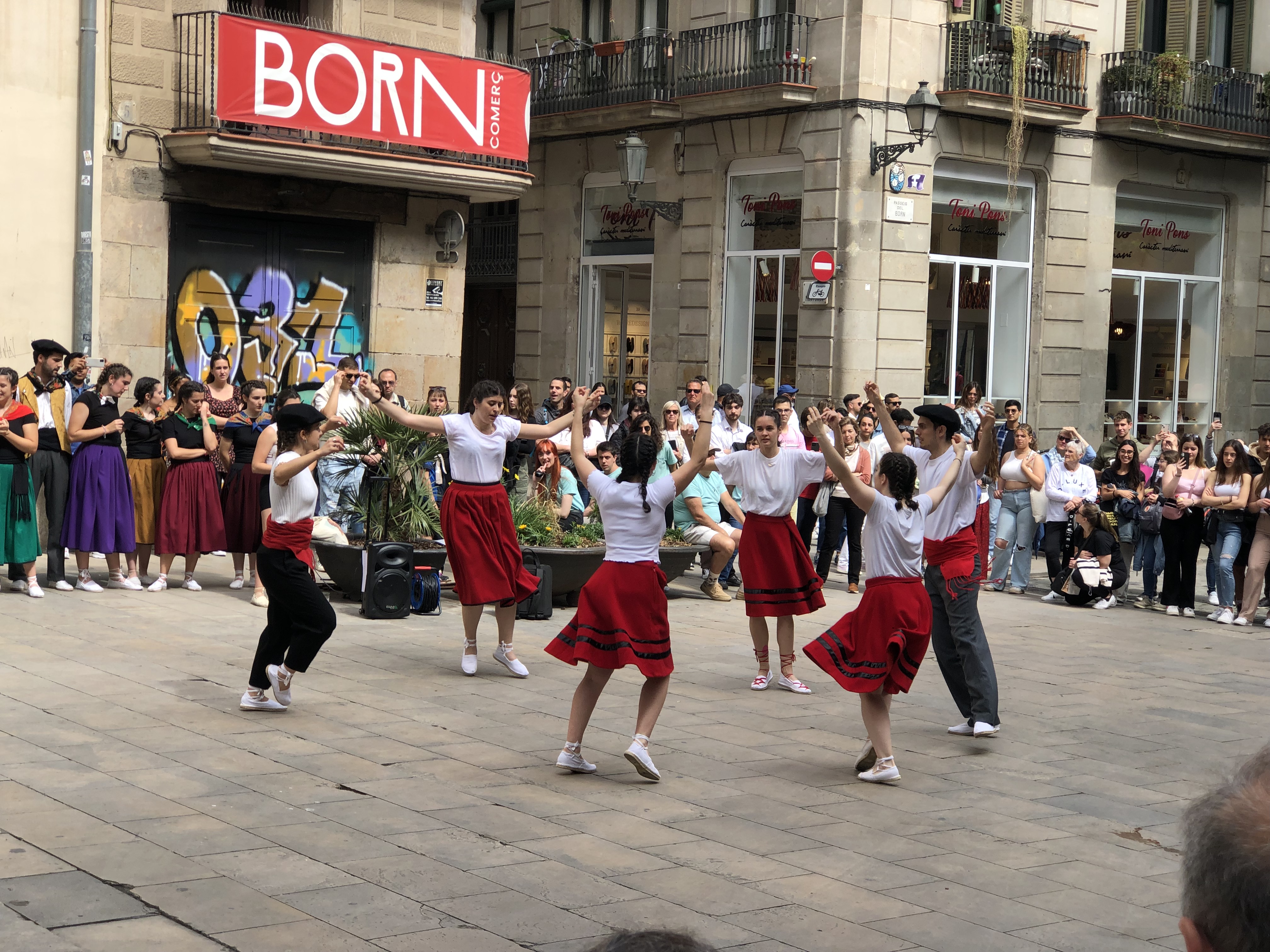One of the few places I saw the flag of the Kingdom of Spain in Spain last month: the Palau de la Generalitat, seat of the Catalan government.

I suppose one of the details of the deal establishing Catalonian autonomy has the flag of Spain at this particular center spot, an acknowledgment, however small, that Catalonia is still part of Spain. We spotted the flags not long after leaving Barcelona Cathedral. Our unspoken goal: wander around the Barri Gòtic, to and through its plazas.
The Palau de la Generalitat, which had a long construction period from the 15th to the 17th centuries, fronts Plaça Sant Jaume; across the way directly is Barcelona City Hall.

One of the residential buildings facing the plaça displays its conviction that Catalonia should be independent, in the form of an Catalonian independence flag, the Estelada. We saw a scattering of the flags around the city.
The lively Plaça de Santa Maria, the open space in front of Basilica de Santa Maria del Mar. As we wandered by, a troupe of dancers danced, so we stayed a while.
An important (main?) branch of the Barcelona City History Museum (MUHBA) has an entrance on the plaza. I’ve read that Roman ruins are in its lower level, but no go. The lower level was closed for unspecified reasons. Instead we spent time on the first (ground) floor, where you can see La Capilla de Santa Maria del Palacio Real Mayor, a royal chapel ordered built by James II of Aragon (Jaume).

Plus an assortment of smaller artifacts from Old Barcelona.
I saw this Barri Gòtic plaza on the map, and I knew I had to see it.
An unpretentious square, with little to indicate who it is named for.
I was beginning to think there was nothing to honor the man, but I was wrong.
No statue or the like, which I suspect the honoree would have found faintly ridiculous. Well done, Barcelona.
